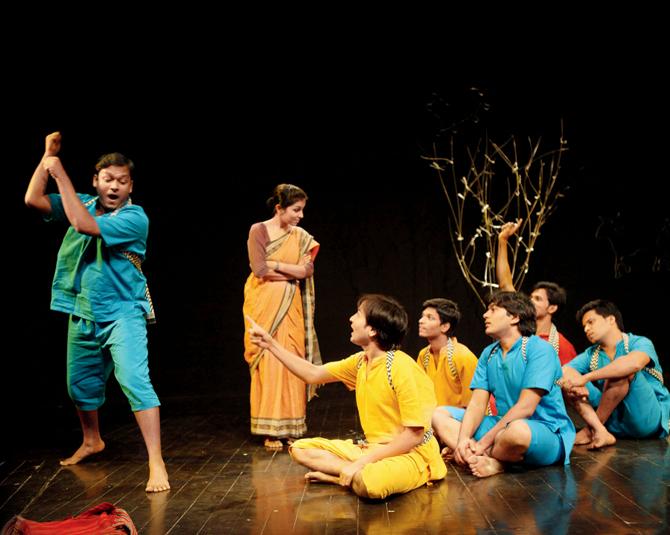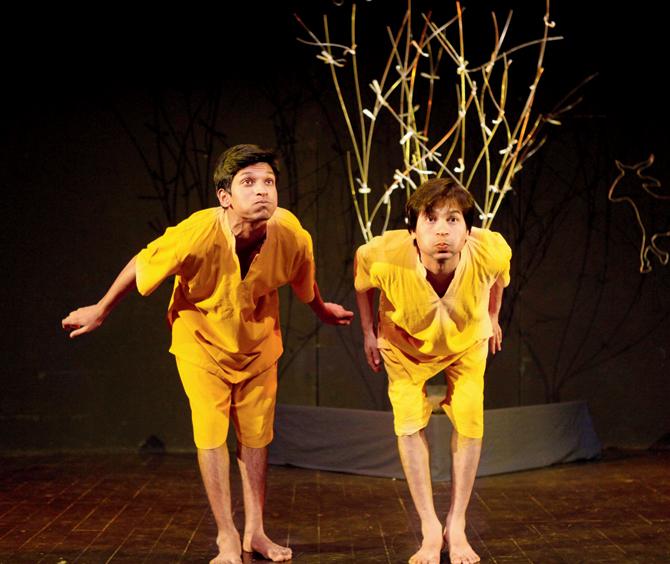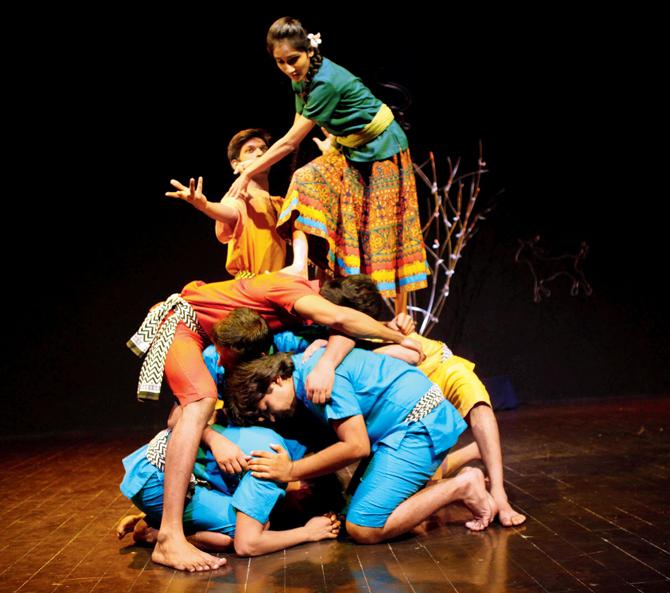Gillo Theatre Repertory's Kyun-Kyun Ladki is inspired by a Mahasweta Devi original but adds a new layer to the popular tale

Scenes from an earlier performan-ce of Kyun Kyun Ladki
![]() Kyun-Kyun Ladki, based on Mahashweta Devi’s pictorial story, Why-Why Girl, celebrates curiosity in children. While the play tells the story of the book’s protagonist Moyna, it adds another layer with stories of other children who, like her, ask incessant questions. “The story hasn’t been simply adapted. In our version, there are parallel stories running with Moyna’s.
Kyun-Kyun Ladki, based on Mahashweta Devi’s pictorial story, Why-Why Girl, celebrates curiosity in children. While the play tells the story of the book’s protagonist Moyna, it adds another layer with stories of other children who, like her, ask incessant questions. “The story hasn’t been simply adapted. In our version, there are parallel stories running with Moyna’s.
ADVERTISEMENT

Scenes from an earlier performan-ce of Kyun Kyun Ladki
A common thread connects them — curiosity. For example, all of them ask why the sky is blue, irrespective of their background,” says director Shaili Sathyu who has also done the adaptation. “The book captures the essence of the lives of tribal children who may not go to school but learn from nature and their surroundings. Mahasweta Devi’s lead character carried typical traits of children . They are uninhibited, innocent, carefree and curious. This is what I found most attractive in the story when I read it about 10 years ago,” she shares.

Previously, Sathyu had adapted the works of Tagore, Anushka Ravishankar and Shameem Padamsee. “I don’t worry whether people have read the story or not. Even if it is a popular book, I usually focus on how the story and characters speak to me, how my team reacts to it and the relationship we develop with the story,” she says. “In this case, there are three definite stories which we’ve called red, yellow and blue, and bits and pieces of information about the lives of other children are woven in. We have kept the order free flowing, so that we can perform it in reverse too,” she adds.

The 80-minute Hindi play that has 11 performers uses a lot of movement, as actors transform themselves into animals and animate and inanimate objects. Bangalore-based dancer Hamsa Moily has choreographed it while the music, composed by Mithila Lad, features live performances with vocals, and instruments like the flute, djembe and a violin.
The play that was first performed in 2011 will be staged in the city after three years. “Most of the cast has changed. Much of the impact of the scenes comes from the chemistry the actors share. This element, I feel, will be new for the audience too,” says Sathyu before heading back to rehearsal.
 Subscribe today by clicking the link and stay updated with the latest news!" Click here!
Subscribe today by clicking the link and stay updated with the latest news!" Click here!






